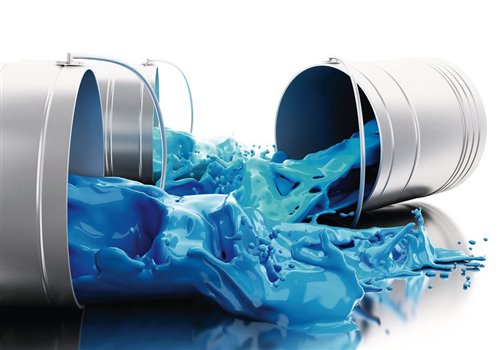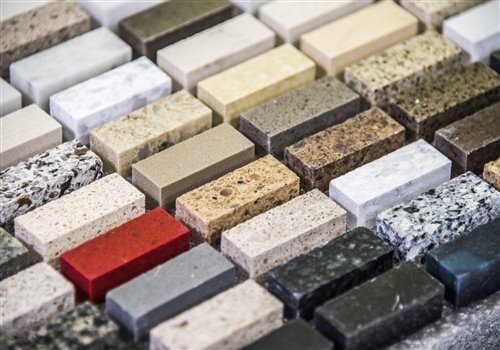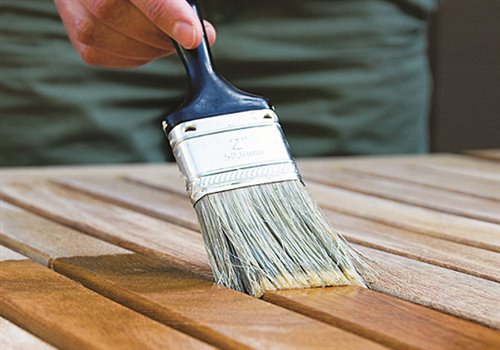History
Wood, as a renewable source, is one of the oldest and most primitive building materials from nature that humanity has used throughout history. It is used for instance in making wooden artifacts, creating load-bearing members of buildings, and auxiliary works in construction such as creating formwork, scaffolding, facade and decoration. However, it has disadvantage of variability under different environmental conditions. When wood is placed in the open air unprotected, it will experience: 1) optical degradation by ultraviolet rays, 2) wetting, hydrolysis and swells by water, and 3) discoloration and degradation due to staining as well as decay by microorganisms.
When placed in the open air, the smooth surface of the wood becomes rough as the grain rises and creates small cracks. The cracks then turn into large cracks, grains may loosen, planks may warp and detach from fasteners. As a result, the roughened surface becomes discolored and collects dirt and mold and loses its usual surface. In addition, the wood loses its surface cohesion, becomes brittle and crumbles. These effects all are due to a combination of light, water, heat and mechanical forces, which are called weathering.
Weathering Factors
1- Humidity
One of the main causes of the wood’s weathering is frequent exposure to rapid humidity changes. Rainwater or dew falling on unprotected wood is quickly absorbed by capillary action on the wood surface and then penetrates the cell walls of the wood and swells the wood.
2- Light
Photochemical degradation of wood due to the ultraviolet light of the sun occurs relatively quickly on the surface of the wood. The wood first becomes yellow or brown and then becomes gray, which is due to the decomposition of lignin in wood cells at a depth of 0.05 to 0.5 mm from the surface.
3- Other Factors
Increase in temperature speeds up the rate of photochemical and oxidation reactions. For example, researchers have found that light can accelerate decomposition of lignin during weathering, which can greatly reduce the wood strength. Freezing and melting of absorbed water can cause damage to the wood texture. In addition, abrasion or mechanical factors such as wind, sand and soil can have considerable effect on destruction of the wood surface. The use of resins to protect the wood surface against the mentioned factors is not a new subject. Some of the solutions are presented in the following:
-
-
The use of alkyd and acrylic resins to protect wood against fungi and insects
-
Fungi and insects unlike weathering can completely destroy the wood structure. Thus, wood products must be protected against fungi and insects to prevent or delay their deterioration. These protections can be divided into two categories: chemical and thermal.
In chemical preservation, chemical preservatives, which are classified as pesticides, are applied to the wood or other chemicals are used to protect the wood surface and make it less susceptible to biological degradation. Preservative formulations usually include fungicides and insecticides that are applied on the wood using high pressure and vacuum. The modification degree depends on the formulation, loading of preservative and adjustability of different wood species. Water-based resins and solvent-based alkyd and acrylic resins can be used in such cases.
-
-
اModifications with DMDHEU Derivatives
-
Belmador process is used to remove air from wood in dyeing plant under the pressure of the steam boiler. Afterwards, the aqueous resin solution completely penetrates the wood at a pressure of about 10 bar. The cellulose fibers cross-link with each other after subsequent heating at a temperature of more than 100 °C. This process does not create a separate layer and only the resin penetrates the wood.
-
-
Phenol Formaldehyde Resins
-
These resins can be used in a wide range of applications due to their properties such as adhesion strength and high thermal resistance, good dimensional stability and high resistance to water, solvent and acid. In addition, phenol formaldehyde (PF) glues are the main thermoset glues that are used for gluing wooden parts and panels.
Phenol-formaldehyde resin is created of two components of phenol and formaldehyde in the presence of acidic or basic catalysts by condensation polymerization method. The reaction depends on the catalyst type. Resole and Novolac are examples of phenol formaldehyde resins. Resole is prepared in alkaline conditions with an excess formaldehyde molar ratio, but Novolac is prepared in acidic conditions with an excess phenol molar ratio.
-
-
Urea-formaldehyde resins
-
Like phenol formaldehyde resins, urea-formaldehyde resins (UF) are prepared and synthesized by condensation polymerization method using urea and formaldehyde monomers. These resins are used as adhesive in the wood industry. These adhesives have features such as low price, high reactivity, transparency and flame retardant, and their disadvantage is that they do not have resistance to water.
-
-
Modification by Melamine Formaldehyde Resins
-
Melamine formaldehyde resin is another resins prepared by compression polymerization method. In the chemical modification of wood with melamine resins, cross-linking occurs mainly due to the reaction with the hydroxyl groups of the wood. Coating with melamine resins creates more stable and harder wood and improves protection against decay. Wood that is modified with melamine resins is also called polymer wood. The disadvantages of this method are its very high costs. The figure below shows an example of wood coated with melamine resin cured with UV light.

-
-
Urea-formaldehyde Melamine Resins
-
Melamine formaldehyde (MF) resin is widely used in the manufacture of molding compounds, laminates, adhesives, surface coatings and other industrial applications. Melamine formaldehyde resin has a much higher resistance to water attack than urea-formaldehyde resin. However, MF resin is expensive compared to UF resin. For this reason, nowadays MF resin has been made cheaper by adding urea to it to form melamine urea-formaldehyde (MUF) resin.
Resitan Co., as one of the largest producers of industrial resins, produces amino resins such as urea-formaldehyde and melamine formaldehyde with appropriate quality and high capacity for use in the wood industry.







